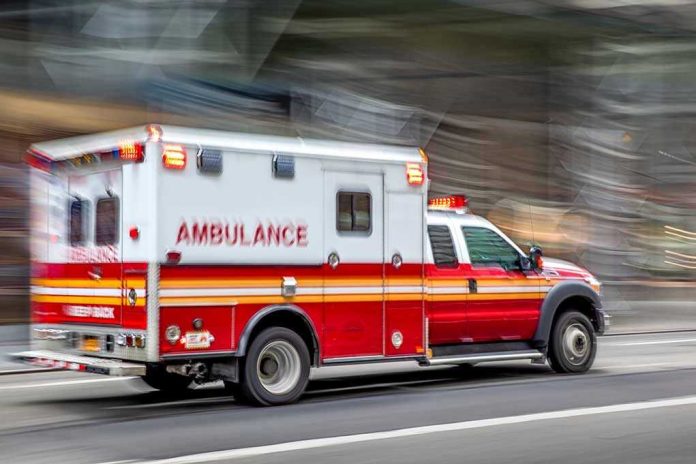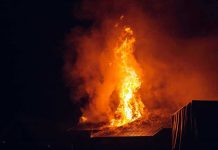
Imagine attending a quaint church performance, only to witness eight children rushed to the hospital with mysterious seizures—how did this peaceful event turn into a scene from a thriller?
At a Glance
- Children aged 11 to 13 fell ill after a performance at St. Paul’s Church.
- An unidentified smell led to one child experiencing breathing difficulties.
- The historic venue’s safety protocols are now under scrutiny.
- Authorities are investigating the incident, with no confirmed cause yet.
A Historic Stage with Modern Challenges
St. Paul’s Church in Cambridge, Massachusetts, is a grand old dame with a storied past, serving as a cultural beacon since the early 20th century. Designed by Edward T. P. Graham, the church’s architectural beauty is matched only by its rich history as a community hub. However, during a recent performance by young choir members, the church’s historical charm became overshadowed by an unexpected health scare. As the children sang their hearts out, an unidentified smell filled the air, leading to alarming physical reactions among the performers, including a child gasping for breath.
This incident is a stark reminder of the unique challenges faced by historic venues, where maintaining air quality and implementing modern safety protocols must balance with the preservation of history. Even with no prior incidents of this nature at St. Paul’s, this event raises questions about the readiness of such sites to handle emergencies.
Stakeholders and Their Roles
The immediate victims in this unfolding drama are the children and their families, whose health and peace of mind are paramount. St. Paul’s Church, the venue operator, is responsible for ensuring the safety of all parishioners and visitors. The event organizers, likely community or school leaders, must also answer for the incident’s oversight. Local authorities, including the Cambridge Fire Department and EMS, play a crucial role in the emergency response and ongoing investigation.
Each stakeholder brings unique motivations and concerns, from the church’s desire to maintain its reputation to parents’ demands for transparency. The local authorities have the power to enforce regulations and ensure public safety, while the church and event organizers must comply with these standards.
Investigations and Implications
As of now, the scent that sparked the health crisis remains a mystery. Authorities are working diligently to uncover its source, conducting air quality tests and reviewing maintenance records. The church continues to operate, but future events might face stricter scrutiny or even temporary suspension until safety measures are verified and enhanced.
This incident could have long-reaching effects, leading to significant changes in how historic buildings host public gatherings. Increased scrutiny on air quality and maintenance could become the norm, ensuring the safety of attendees and performers alike. In the short term, the focus remains on the affected children and providing reassurance to their families.
Broader Impacts and Expert Opinions
Economically, the church might incur costs related to investigation and potential remediation efforts. From a social perspective, there is now a heightened awareness of safety issues in historic venues, possibly affecting event attendance if concerns linger. Politically, this incident might prompt local governments to review safety regulations for public events, especially in older buildings.
Experts in building safety and public health stress the importance of regular air quality assessments, especially for historic structures. Balancing preservation with modern safety standards is no small feat, but one that’s crucial for preventing similar incidents in the future. While such events are rare, they highlight systemic issues in maintenance and oversight that need addressing.
Sources:
St. Paul’s Parish official history
Capturing Cambridge historical notes
Harvard Catholic Center historical overview






